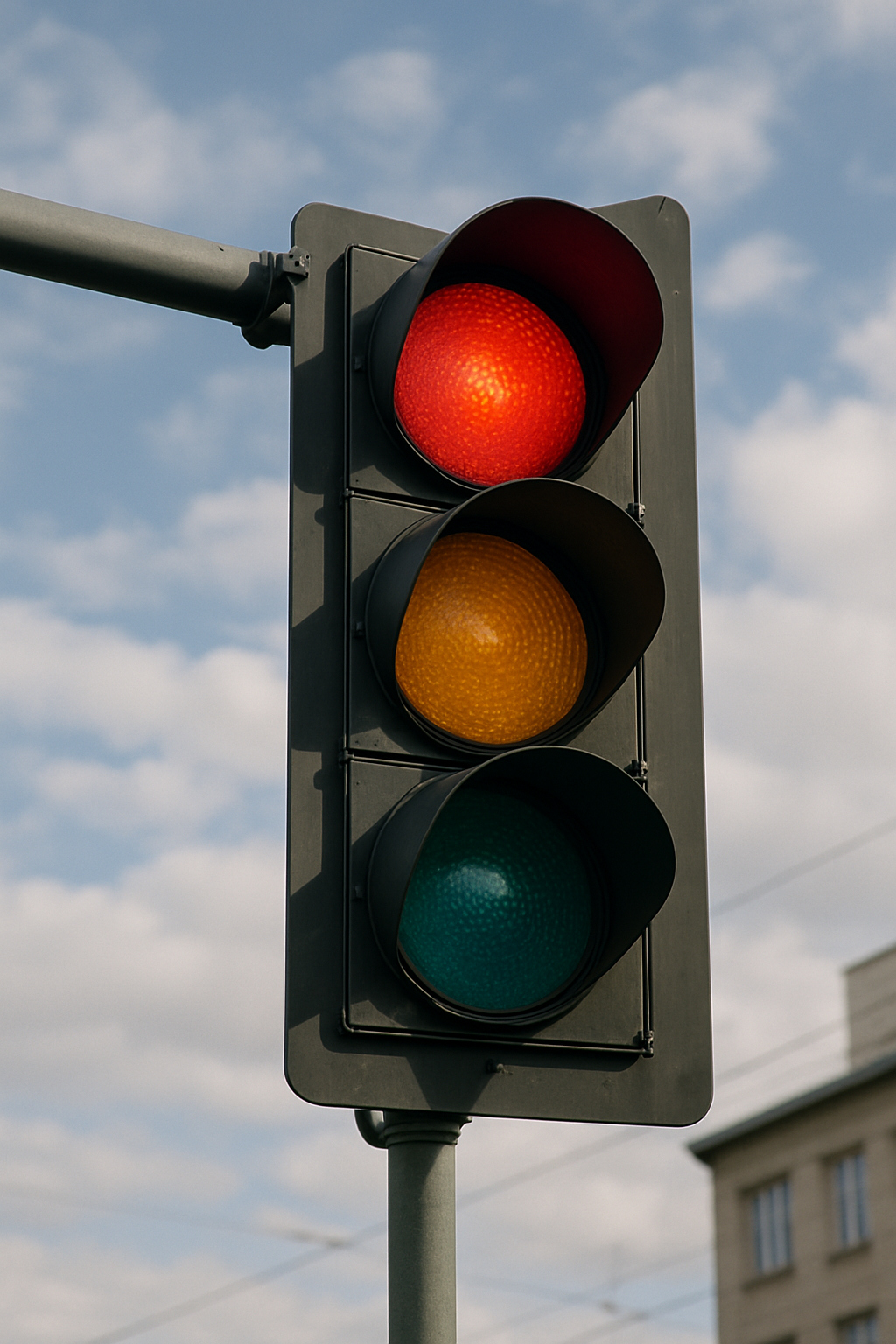
By Jenny Holly Hansen | WBN News | May 14, 2025
Every day when I’m driving around town, I take traffic lights for granted. Red means stop, green means go, and yellow — well, that means "hurry up" or "slow down," depending on who you ask. But have you ever wondered how these lights became so standardized, not just here in Canada, but almost everywhere in the world?
I found it fascinating to learn that the system we rely on so heavily today didn’t happen by accident — it evolved out of necessity, driven by booming cities, advancing technology, and the need for safety.
The First Traffic Signals: Before the Lights
Believe it or not, the earliest traffic "signals" predate cars altogether. In the 1860s, London installed a gas-lit traffic signal outside the Houses of Parliament to help control horse-drawn carriages and pedestrians. Unfortunately, it exploded just a year later due to a gas leak, and the idea was shelved for a while.
It wasn’t until the early 20th century, when automobiles started crowding city streets, that the need for a new system became urgent. Police officers stood in intersections, manually directing traffic — but as car numbers exploded, this became dangerous and unsustainable.
The Birth of the Electric Traffic Light
The first electric traffic signal was installed in Cleveland, Ohio, in 1914. It had only two colors: red and green. Police officers manually controlled the lights, and there was even an audible buzzer to let drivers know when the light was about to change.
In 1920, Detroit police officer William Potts — working at the heart of the American car industry — created the first three-color traffic signal by adding a yellow light. His innovation was simple but revolutionary: yellow provided a clear warning phase between green and red. It helped prevent accidents caused by drivers racing through intersections at the last second.
Detroit soon installed Potts’ invention across the city, and other major cities quickly followed.
How Standardization Took Hold
As more cities adopted traffic lights, it became obvious that consistency was necessary. Imagine traveling from one town to the next and finding out that green meant stop or that there was a purple light for "yield." Chaos would have been inevitable.
In the 1930s, standardization efforts began in earnest:
- The Manual on Uniform Traffic Control Devices (MUTCD) was introduced in the United States in 1935. It provided consistent rules about light colors, sequences, and designs.
- Other countries developed their own versions of these standards, but many aligned with the American system to make things easier for international travelers and manufacturers.
- The three-color system — red for stop, green for go, and yellow for caution — became universal because it was easy to understand, even for people who couldn’t read road signs.
Standardization didn’t stop at the colors. The shape (circular lights), the order (top to bottom or left to right), and the meanings all became tightly regulated to ensure consistency, safety, and efficiency.
Why Red, Yellow, and Green?
Interestingly, the color choices weren’t random either. Red has long been associated with danger or warning — even in nature. Green, the color of plants and safety, felt natural for "go." Yellow was chosen because it’s highly visible and offers a clear sense of caution without being as urgent as red.
These intuitive choices helped make traffic lights easy to adopt worldwide, without major cultural barriers.
Final Thoughts
When I’m sitting at a traffic light today, I realize how much thought, innovation, and collaboration went into something we now barely notice. Traffic lights are a perfect example of how simple ideas, when standardized across societies, can quietly and profoundly shape our everyday lives.
Next time you're waiting at a red light, maybe you'll appreciate that little glow a bit more — I know I do.
Let’s Keep Talking:
Jenny is a business insurance broker with Waypoint Insurance. With 19 years experience, she will well versed in the technical aspects of business coverages.
She can be reached at 604-317-6755 or jholly-hansen@wbnn.news. Connect with Jenny on LinkedIn at https://www.linkedin.com/in/jenny-holly-hansen-365b691b/. Connect with Jenny at BlueSky: https://bsky.app/profile/jennyhollyhansen.bsky.social
Let’s Meet Up:
Jenny Holly Hansen is a cohost with Chris Sturges of the Langley Impact Networking Group. You are welcome to join us on Thursday’s from 4pm to 6pm at: Sidebar Bar and Grill: 100b - 20018 83A Avenue, Langley, BC V2Y 3R4
TAGS: #Jenny Holly Hansen #Traffic Lights #Manual on Uniform Traffic Control Devices (MUTCD)



